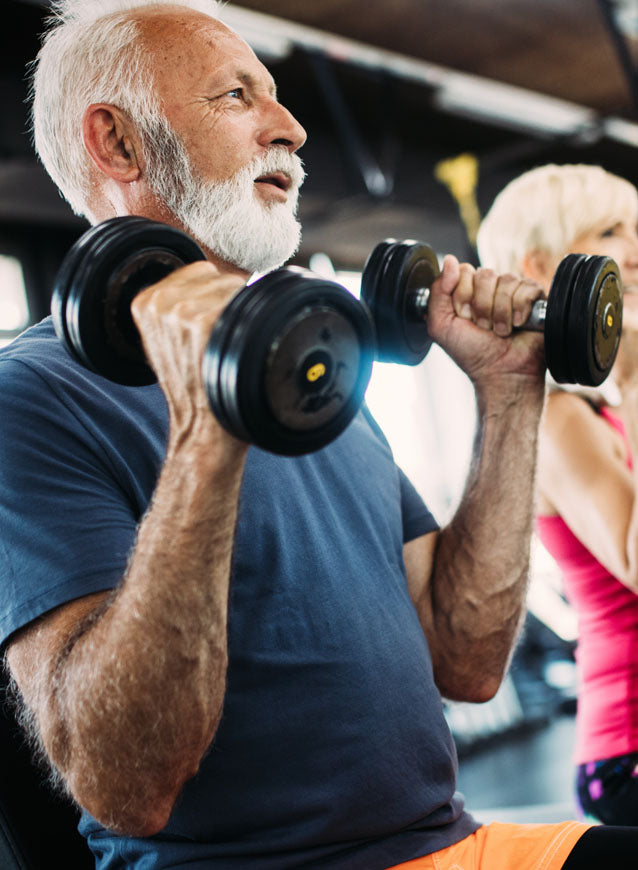Enjoy free shipping on all orders
- The Muscle/Skeletal System is the body's "support" system. It holds the body up, offers protection, allows movement, and provides strength.
- The major components of this system include, bone and muscle; tendon, ligament, and cartilage; and articulations (joints), both moveable and fixed.
- Bone is a living structure. It contains organic materials - such as blood vessels and nerves - and minerals, mostly calcium.
-
Bone has several important functions in the body. It:
- Acts as the body's support.
- Acts as anchor points for muscle, ligament, and cartilage.
- Serves as a source of calcium
- Is the major creator of blood cells.
-
Bones are connected at joints, also known as articulations. Some joints form levers where movement occurs. There are six kinds of moveable joints:
- Ball and socket, such as at the hip.
- Hinge, such as at the elbow.
- Saddle, such as where the thumb meets the hand.
- Ellipsoid, such as in the wrist.
- Pivot, such as the joint which allows our heads to turn left and right.
- Cliding, such as the joint at the clavicle and scapula which allows the upper body to move forward and backward.
- Body movement is initiated by nerve impulses. These impulses tell the appropriate muscle to contract or expand, which in turn causes movement at joints.
-
Despite their appearance, muscles are not solid. Instead, they are made up of bundles of fibers. There are three types of muscle:
- Skeletal muscle, which contracts and expands to allow joint movement.
- Cardiac muscle, found only in the heart.
- Smooth muscle, which makes up the walls of some organs.
-
Cartilage is avascular, that contains no blood vessels. It does not recover from injury well, but does replace itself in cases of normal wear, such as at joints. There are three types of cartilage:
- Hyaline cartilage, which is most common and found in the ribs, notes, larynx, trachea. It is a precursor of bone. Fibro cartilage, which is found in invertebral discs, joint capsules, and ligaments.
- Elastic cartilage, which is s found in the outer ear and epiglottis and helps support the larynx.
- Tendons are fibrous bands or cords which connect muscles with bones or other structures.
- Ligaments are fibrous bands or sheets which connect bones, cartilages, or other structures. Ligaments also serve as support for muscles or fascia (sheets of fibrous tissue that enclose muscles).
- Joints are cushioned, nourished, lubricated, and protected by synovial fluid, a liquid that surrounds joints.
- Articulations: joints
- Avascular: without blood vessels.
- Bone: living structure which contains organic materials, such as blood vessels and nerves, and minerals such as calcium.
- Cartilage: an avascular connective tissue which is found in joints and makes up the majority of embryo skeletons.
- Clavicle: a bone connecting the breastbone with the shoulder blade; collarbone.
- Elastic cartilage: flexible hyaline cartilage which makes up the out ear and helps support the larynx.
- Fascia: sheets of fibrous tissue that enclose muscles.
- Fibrocartilage: strong, fibrous cartilage which helps resist impact.
- Hyaline cartilage: flexible cartilage which covers bone ends at joints.
- Joints: also known as articulations. It is a place or a part where two bones are joined, usually so that they can move.
- Ligament: fibrous bands or sheets which connect bones, cartilages, or other structures.
- Minerals: metals which the human body needs in amounts greater than 100 mg daily.
- Muscle: bundles of fibers which contract and expand to allow joint movement.
- Organic materials: carbon-based living, or formerly living, substances including human tissue.
- Scapula: shoulder blade.
- Synovial fluid: the nourishing, lubricating liquid that surrounds and protects joints.
- Tendon: fibrous bands or cords which connect muscles with bones or other structures.
- Choosing a selection results in a full page refresh.






